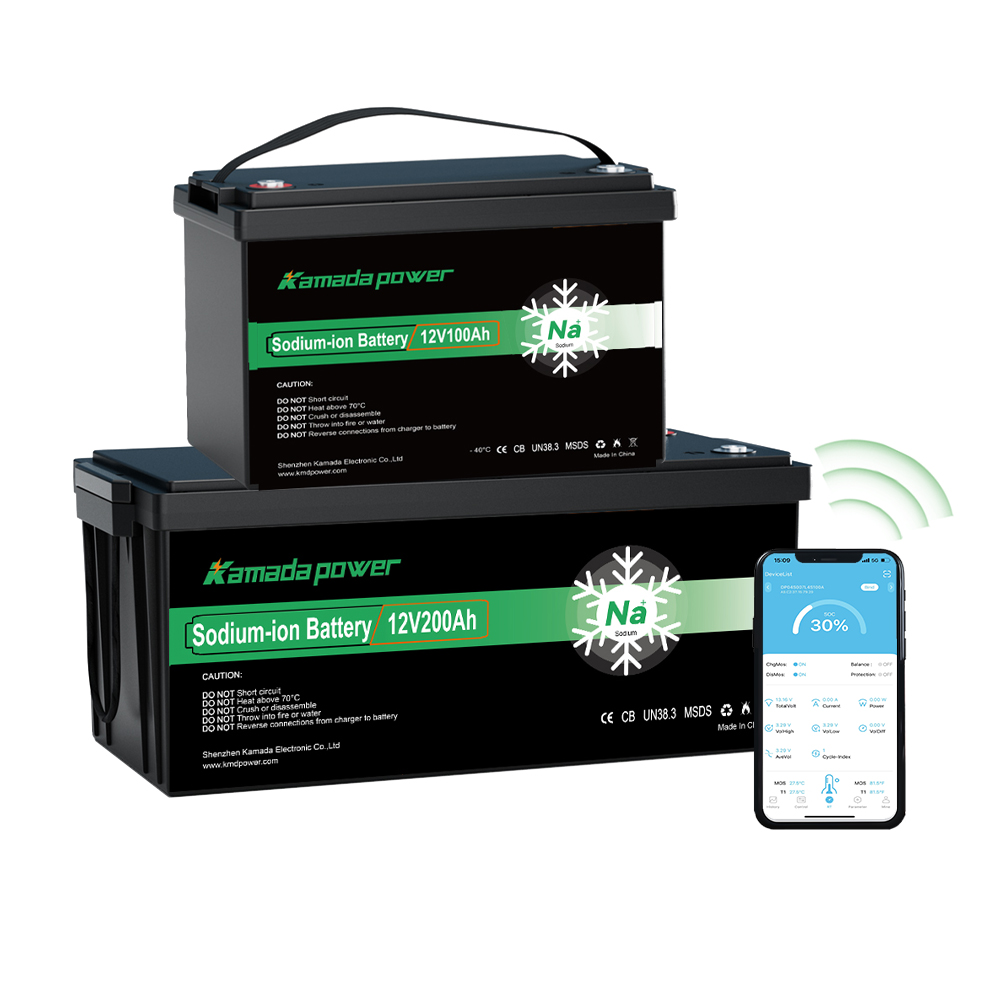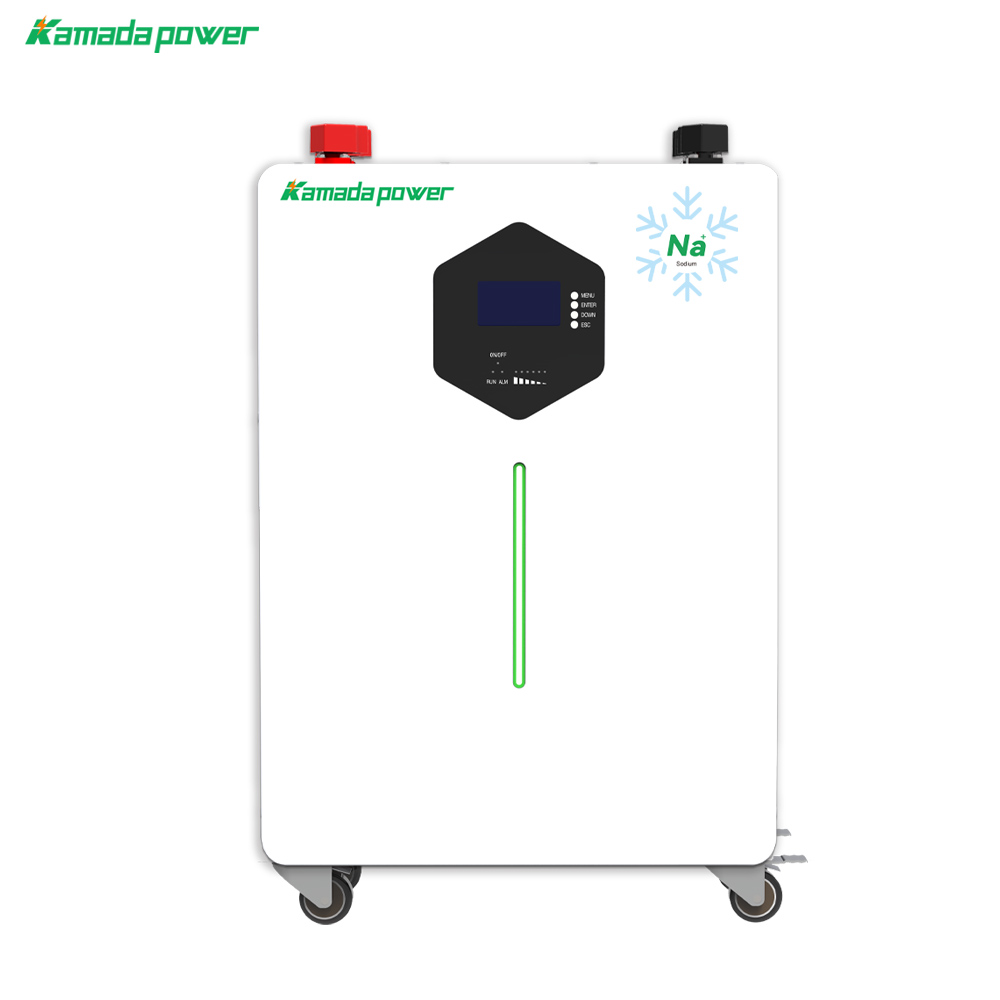What is the environmental impact of sodium-ion batteries compared to lead-acid and lithium-ion? A decade ago, battery decisions hinged on cost and lifespan. Now, a heavier question dictates our choices: “What’s its environmental story?” This isn’t just a casual inquiry; it’s a critical factor driven by ESG goals and customer demands with lasting consequences. Moving beyond marketing hype, this analysis draws on years of hands-on experience to conduct a structured environmental teardown of lead-acid, lithium-ion, and sodium-ion batteries. We’ll examine the complete lifecycle—from mine to recycling plant—to uncover the real data behind each chemistry’s environmental impact.

12v 100ah sodium ion battery

kamada power 10kwh home sodium ion battery
What is a Battery Lifecycle Assessment (LCA)?
If you want to honestly gauge a battery’s environmental impact, you have to look at the whole picture. One piece of it just won’t do. That’s the job of a Lifecycle Assessment, or LCA. It’s the industry standard for a “cradle-to-grave” analysis that examines every single stage of a product’s life. For our purposes, we’re going to focus on four make-or-break stages:
- Raw Material Extraction & Processing (“The Cradle”)
- Manufacturing & Carbon Footprint
- Operational Use & Efficiency
- End-of-Life: Recycling & Disposal (“The Grave”)
Where a battery’s guts come from matters immensely. This first stage can rack up a huge environmental bill before the battery even gets assembled.
Lead-Acid (The Toxic Incumbent)
Lead-acid is the old workhorse. But its main ingredient, lead, is highly toxic. There’s no sugarcoating it. The mining and smelting needed to get new lead are infamous for polluting local soil and water. While the industry has done a great job of recycling lead, the process of getting it out of the ground in the first place is messy and poses serious health risks to workers and communities.
Lithium-Ion (The Complicated Mainstream)
Lithium-ion chemistries like NMC and LFP are everywhere now, but their supply chain is a minefield of issues. Any procurement manager knows the headaches that come with sourcing the big three:
- Lithium: A lot of it comes from brine evaporation ponds in deserts. This process uses a staggering amount of water in places that don’t have water to spare.
- Cobalt: The elephant in the room. A huge portion of the world’s cobalt supply is tied to the Democratic Republic of Congo, where its mining is plagued by human rights abuses. It’s the definition of a “conflict mineral.”
- Nickel: While not as fraught with ethical issues as cobalt, nickel mining still leaves a big environmental hole in the ground.
The sheer amount of land and water needed for these materials creates a tough sustainability puzzle for what is otherwise a great technology.
Sodium-Ion (The Abundant Challenger)
This is where the script flips. Sodium-ion’s key material is sodium. You know, from salt. It’s one of the most common and widely distributed elements on earth. This simple fact nearly eliminates the geopolitical drama and supply chain nightmares that come with lithium-ion. The other components in a sodium-ion pack—aluminum, iron, manganese—are everyday materials with boringly stable and far less damaging supply chains.
Let’s be real: building any battery takes a lot of energy. The devil is in the details of where that energy comes from and what the specific chemistry demands.
- Lead-Acid plants have energy-intensive smelting and formation processes that haven’t changed much in decades.
- Lithium-Ion production involves things like high-heat electrode coating and long, power-draining cell formation cycles. It adds up.
- Sodium-Ion has a serious ace up its sleeve here. One of the most practical things we’re seeing is that Na-ion cells can often be built on the exact same assembly lines as lithium-ion cells. That’s a huge deal. It means we don’t need to build a whole new universe of factories. When you also cut out the intense energy needed to mine and process cobalt and nickel, the overall carbon footprint just gets better.
Stage 3: Operational Use & Efficiency
A battery’s environmental impact doesn’t stop when it leaves the factory. Its daily performance is a key part of the equation. We measure this with round-trip efficiency—how much power you get out versus what you put in.
- Lead-Acid just can’t compete here. Its efficiency is around 80-85%. That means for every 100 dollars you spend charging it, you’re throwing 15 or 20 bucks away as wasted heat. Every single cycle.
- Lithium-Ion and Sodium-Ion are in another class entirely, with efficiencies north of 92%. They just don’t waste as much energy. It’s that simple.
- And don’t forget the on-the-job hazards. Any maintenance tech knows the danger of a leaking lead-acid battery and the corrosive sulfuric acid inside. That’s a risk that’s completely gone with sealed Li-ion and Na-ion packs.
Stage 4: End-of-Life: Recycling & Disposal
What happens when the battery is finally spent? Honestly, this might be the most critical question of them all.
Lead-Acid’s Single Greatest Strength
I have to hand it to the lead-acid industry. They nailed this one. They have a mature, profitable, and incredibly efficient closed-loop recycling system. In the US and Europe, more than 98% of these batteries get recycled. It’s a textbook example of a circular economy that actually works.
The Lithium-Ion Recycling Challenge
Let’s be blunt about it. The lithium-ion recycling situation is a mess. The actual recycling rates are tiny, often less than 10%. The methods are complex, expensive, and use a ton of energy. On top of all that, the risk of fires during shipping and storage is a constant nightmare for logistics.
The Sodium-Ion Recycling Outlook
The big recycling networks for sodium-ion battery are still being built; there’s no getting around that. But the potential is fantastic. The materials themselves—sodium, aluminum, iron—are less hazardous and cheaper, which should make the whole process much simpler.
The real kicker, though, is safety. You can drain a sodium-ion battery completely to 0 volts before you ship it to a recycler. This virtually eliminates the fire risk that keeps lithium-ion recyclers up at night, making the whole process fundamentally safer and easier for people to manage.
A Head-to-Head Comparison Table
| Environmental Factor | Lead-Acid | Lithium-Ion (NMC/LFP) | Sodium-Ion |
|---|
| Raw Material Impact | Very High (Toxic Lead) | High (Cobalt, Lithium, Water) | Low (Abundant Sodium) |
| Manufacturing CO2 | High | High | Moderate (Leverages Li-ion lines) |
| Operational Efficiency | Low (~85%) | Very High (>95%) | Very High (>92%) |
| Toxicity in Use | High (Acid Leak Risk) | Low | Very Low |
| Recycling Maturity | Very High (>98%) | Low (<10%) | Very Low (Emerging) |
| Future Potential | Limited | Improving | High |
| Expert’s Verdict | Legacy Risk: Excellent recycling can’t offset raw material toxicity. | The Trade-Off: High performance with significant supply chain baggage. | The Sustainable Choice: Superior “cradle” story with a developing “grave” solution. |
Conclusion
Sodium ion batteries address concerns about supply chain stability and environmental impact from the outset with materials that are abundant, widely distributed, and less hazardous, offering a clear path to achieving your ESG (Environmental, Social, and Governance) goals in stationary energy storage projects, such as commercial storage or marine backup power. Although recycling facilities are still under development, its inherent advantages in materials and safety make it a long-term winner from an environmental perspective.
If you want to learn how this more sustainable battery can integrate into your operations and meet your ESG targets, contact us let’s talk. We can tailor the best sodium-ion battery solution for your next project.
FAQ
1. Is sodium-ion really that much better than LiFePO4 (LFP) batteries on the green scale?
LFP is a great chemistry because it avoids cobalt, but it still depends entirely on lithium, with all its associated water and land use issues. Sodium-ion uses super-abundant sodium, giving it a much cleaner bill of health right from the start, at the raw material stage.
2. What’s the biggest environmental knock against sodium-ion right now?
The only real catch is that the large-scale recycling network is still in its infancy. That’s just because the tech is new to the market. But because the materials are safer and easier to handle, everyone expects this infrastructure to scale up much faster and more smoothly than it has for lithium-ion.
3. Can I swap out my old lead-acid forklift batteries for sodium-ion?
Absolutely. Sodium-ion is a prime candidate to replace lead-acid in equipment like forklifts, pallet jacks, and backup power units. You’ll get better efficiency, way more cycles over its life, and it won’t care about hot or cold warehouse temperatures nearly as much—all while being a greener choice.
4. What if the factory making my batteries is in a country that burns a lot of coal?
That’s a sharp question. The local power grid always impacts a battery’s manufacturing carbon footprint. But what the LCAs show is that even on a grid that isn’t perfectly clean, sodium-ion’s raw material advantages—skipping the energy-heavy refining of lithium and cobalt—often give it a lower total carbon footprint right out of the gate.